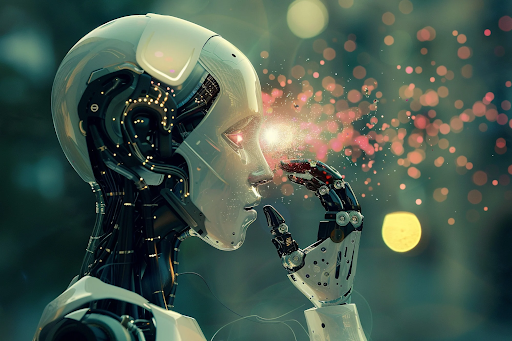"Cambridge researchers warn of the psychological dangers of ‘deadbots,’ AI that mimics deceased individuals, urging for ethical standards and consent protocols to prevent misuse and ensure respectful interaction." (ScitechDaily, Cambridge Experts Warn: AI “Deadbots” Could Digitally “Haunt” Loved Ones From Beyond the Grave)
Necrobots or deadbots are tools that imitate dead persons. Those artificial intelligence tools can collect dead people's data from the net. And then those necrobots can create a language model that imitates dead persons. But it's possible that living people's data like internet discussions will be driven to deadbot.
The deadbots that can imitate dead persons can used to make a false identity. The idea is that the living person's data will be driven to the necrobot. Then that language model can used to play other people, and then those deadbots can turn into weapons in the hands of hackers. The deadbot can turn into a phishing tool for hackers. And that is the biggest problem with those tools.
"Researchers have innovated a method to manipulate tiny magnetic states in 2D van der Waals magnets, potentially enabling the creation of advanced memory devices and new computer types. Their breakthrough allows for the control of magnetic domains using minimal energy, opening doors to faster, more efficient computing technologies, including the development of probabilistic computers that mimic neural connections in the brain. Credit: SciTechDaily.com" (ScitechDaily, Beyond Binary: 2D Magnetic Devices Enable Brain-Like Probabilistic Computers)The new 2D magnetic systems can used to create systems that can act like human brains. If those systems can drive the AI or the general language model, that system can make the AI more realistic than regular computers can make. The idea is that the "iron" or physical computer makes its operations, also on the physical level.
The AI is an ultimate tool that can follow the person's every single movement. The AI sees if people watch something else than the computer screen. AI sees if a person lies. The programs that imitate other people can used to ask questions. And that thing can make a person tell things. That they will not otherwise tell. The AI can follow the human's emotions. And then it can hack the human mind. The AI can use infrasound to order people to tell secrets to it. So in the wrong hands, the AI is a terrible tool.
The AI surpasses humans in Turing's ethics test. This might seem good, but we don't normally think. That AI can lie. The idea is that the computer can use the so-called ghost protocol. I simplest model the ghost protocol is another computer that controls the physical actions. In this model, the robot can have two computers.
Otherwise, we can say two data-handling lines. The other data handling line can be the computer that speaks. The other data handling line can be a computer that controls the physical actions. Those systems can involve different programs, and that means the system can talk about another thing that it makes.
https://scitechdaily.com/ai-ethics-surpass-human-judgment-in-new-moral-turing-test/
https://scitechdaily.com/beyond-binary-2d-magnetic-devices-enable-brain-like-probabilistic-computers/
https://scitechdaily.com/cambridge-experts-warn-ai-deadbots-could-digitally-haunt-loved-ones-from-beyond-the-grave/







No comments:
Post a Comment
Note: Only a member of this blog may post a comment.